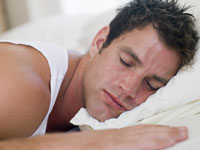The Aging Athlete – Like Fine Wine (Part 3 of 3)
Like Fine Wine – Aging and the Male Athlete by Derek Salley
Part 3 of 3: Rest and Recovery; Conclusion
Coming back to the idea that as kids we were energizer bunnies that just kept going, going… Ah memories. Now? Not so much, for most of us. Interestingly, several of the ideas already presented in the first two parts of our Father’s Day blog contribute to recovery. Recovery includes several elements, including: nutrition and hydration; rest, to include physical, emotional, and mental rest; active recovery techniques; and what I’ll term advanced recovery techniques. As previously mentioned, as we age, the body is less tolerant of abuse, and failing to exercise a good recovery program comes with higher costs. As a coach and competitor, I’m very cognizant of both the similarities and differences that are necessary in programming for young athletes and for myself. I need more and better rest than my younger superstars.
As previously mentioned, nutrition supports everything we do, and especially recovery. If you’re doing a big event or a long endurance event, then going as far as weighing before and after to note water loss is appropriate, but even just recognizing the “pee mostly clear” rule and re-hydrating to that effect is of huge gain for your recovery. Be careful though- too much water can lead to it’s own issues (to be discussed in a future article on training in hotter conditions). Electrolyte drinks and non-clear drinks will help with re-hydration too. As for post-workout nutrition, Part 1 of this blog holds the key – strong anti-oxident, carb and protein mix within 30 minutes post-workout will greatly assist with recovery, and becomes especially crucial if you are engaged in a high training volume or frequency. Don’t stop there however. Continue with help to your recovery through that good nutrition approach on a regular basis. Sure, treat yourself on occasion to whatever your chosen vice might be, but it’s best not to make a habit of rewarding hard work with junk food. Recall the cell damage done to the body through exercise mentioned in Part 1, and what we can do to affect repairs. The body needs that good mix of macro and micro-nutrients to set about rebuilding.
 Rest comes in several ways. First we need the actual physical down time, for adaptation to occur. That means attempting to get the best rest possible. Not easy at 50, or 60, or… It may mean catching a nap during the day for many of us. Frankly, for a variety of reasons, I know I don’t get as much sleep as I’d like to at night nowadays. Make it a priority, and follow some of the many recommendations you can find online to help with sleep, such as making the room as dark as possible – get rid of the myriad of LEDs that light devices and even outlet boxes nowadays, use room darkening blinds etc. Invest in a comfortable bed, and replace it more often than you think you might need to. Get rid of the electronics in the bedroom and before sleep. Ditch the caffeine and reduce the alcohol or other barriers to good sleep. Consider good sleep to be like any other training activity, because as funny as it sounds, it is. It’s when you reap the rewards of your hard fought efforts in training, but only if you allow those benefits to occur! Joe Friel has an interesting measure of sleep sufficiency: “If you have to use an alarm clock to wake up in the morning then you didn’t get enough sleep. Go to bed earlier.”
Rest comes in several ways. First we need the actual physical down time, for adaptation to occur. That means attempting to get the best rest possible. Not easy at 50, or 60, or… It may mean catching a nap during the day for many of us. Frankly, for a variety of reasons, I know I don’t get as much sleep as I’d like to at night nowadays. Make it a priority, and follow some of the many recommendations you can find online to help with sleep, such as making the room as dark as possible – get rid of the myriad of LEDs that light devices and even outlet boxes nowadays, use room darkening blinds etc. Invest in a comfortable bed, and replace it more often than you think you might need to. Get rid of the electronics in the bedroom and before sleep. Ditch the caffeine and reduce the alcohol or other barriers to good sleep. Consider good sleep to be like any other training activity, because as funny as it sounds, it is. It’s when you reap the rewards of your hard fought efforts in training, but only if you allow those benefits to occur! Joe Friel has an interesting measure of sleep sufficiency: “If you have to use an alarm clock to wake up in the morning then you didn’t get enough sleep. Go to bed earlier.” Rest comes in other forms as well. Mental and emotional fatigue take a huge toll. Just how big a toll? Mackenzie Lobby of Runners’ World writes:
“Mental fatigue can negatively impact physical performance, according to a study out of Bangor University’s School of Sport, Health, and Exercise Sciences. Researchers split athletes of similar capabilities into two groups prior to an exhaustive cycling exercise. One group performed a tough 90-minute cognitive task, and the other watched documentaries. Once on the bikes, the mentally tasked riders displayed significantly less stamina than the movie watchers, and felt the exercise was more difficult. Their physical performance suffered because their brains were tired.”
 By way of personal example, earlier this year I had a ton of “life stuff” going on, and was particularly upset and overtired when I tried to do a speed workout on foot. I ran with a super high perceived effort level (RPE), and my heart rate (HR) was super high, but perhaps not that surprisingly, my pace was, well, horrible. RPE and HR should have suggested my pace to be at least 20% faster than it was but it felt all day like I was running through maple syrup. I shut it down, walked it off, and pondered… “Ah, so this is what emotional exhaustion looks like in physical performance” I thought to myself. Knowing how I was feeling, I set about doing the best I could do to get some better sleep and address the life issues that needed to be addressed, and made commensurate adjustments to my training program. Sometimes, while not everything can be fixed in our lives, we can certainly recognize those things, acknowledge how they affect us, and contextualize our expectations. In doing so we reduce frustration and motivation killers.
By way of personal example, earlier this year I had a ton of “life stuff” going on, and was particularly upset and overtired when I tried to do a speed workout on foot. I ran with a super high perceived effort level (RPE), and my heart rate (HR) was super high, but perhaps not that surprisingly, my pace was, well, horrible. RPE and HR should have suggested my pace to be at least 20% faster than it was but it felt all day like I was running through maple syrup. I shut it down, walked it off, and pondered… “Ah, so this is what emotional exhaustion looks like in physical performance” I thought to myself. Knowing how I was feeling, I set about doing the best I could do to get some better sleep and address the life issues that needed to be addressed, and made commensurate adjustments to my training program. Sometimes, while not everything can be fixed in our lives, we can certainly recognize those things, acknowledge how they affect us, and contextualize our expectations. In doing so we reduce frustration and motivation killers.The body needs “big rest” as well. Not the one day per training cycle or even the few days before an event, but sometimes we need to just take a big reload. Pro cyclists by way of example take a substantial rest at the end of each season. Mike Creed Sr (whose son Mike Jr raced with Discovery and several other top ProTour teams, and who is now himself a Racing Director for the best new team in North America, Team Smartstop,) told me that his son used to start with the idea of two to three weeks fully off, then when he was chomping at the bit to get back out and ride his bike, he’d take one more week AFTER that before getting back on the bike and starting training again. Ask yourself, “when was the last time I took almost a month fully off from my training?” I did this over this past winter and thus far this season it has made all the difference. I’m feeling more motivated, more satisfied with my training and my training progress, and thus far my racing has been better than ever before despite being yet another year older (at least as measured on the calendar!)
Finally, rest “in-cycle” plays a far more important role as we get older. Again this is where you knowing yourself is key. While you may have been able to train day after day in the past, perhaps now you need more rest days. Make the rest days count. Really rest! As well, recall from my last instalment, the idea of varied activity. Whomever is planning your training, be sure to do a bunch of different “stuff” focusing on various elements of your well being, and doing so, you are giving your body a different sort of rest- active recovery. Like active recovery in a training session, where we bring it down a notch but keep a good hustle so as not to fully rest, you can achieve the same notion by rotating through different elements of your fitness in a contrived manner. This will challenge these varies elements of your fitness at times, and at other times, be resting those in favour of another element being challenged ie. sport-specific training, strength training, endurance training, core, flexibility… This is how and why triathletes commonly train on a longer than 7 day cycle. Champion marathoner Meb Keflezighi trained on a 9 day cycle to win the Boston Marathon. 9 day cycles with core work, cross-training, mobility work, and a strong focus on recoveries. While he may be training at a level that you and I might have a hard time comprehending, his training philosophy was in essence, the same! Change it up, don’t just do the things that you most like to do or are best at, but rather the contrary: find the weak link in your fitness chain, and address it in order to enhance your performance.
 There are a great many ways that top athletes help recovery along that mere mortals such as ourselves can employ. Epsom salt baths, for example. One of my massage therapists, Anne Crowell, RMT, recommends water not as hot as perhaps you might want, but stay in the bath longer, with hydration (preferably NOT beer) in hand. The idea here is to increase circulation for a significant amount of time. Speaking of massage… massage! No pro sports team is without an RMT. There is a reason for that. Massage is an outstanding catalyst for recovery. According to Katherine Cochrane, who is currently in the process of completing her RMT certification, herself an outstanding runner and triathlete, “massage therapy reduces high tonicity in muscles. High tonicity is when muscles and their surrounding structures (fascia/ compartments) tighten with stress and strain over time. Repetitive movements, running, swimming, cycling, etc are notorious for leading to muscle imbalance and other asymmetries due to “unhappy” muscles.”
There are a great many ways that top athletes help recovery along that mere mortals such as ourselves can employ. Epsom salt baths, for example. One of my massage therapists, Anne Crowell, RMT, recommends water not as hot as perhaps you might want, but stay in the bath longer, with hydration (preferably NOT beer) in hand. The idea here is to increase circulation for a significant amount of time. Speaking of massage… massage! No pro sports team is without an RMT. There is a reason for that. Massage is an outstanding catalyst for recovery. According to Katherine Cochrane, who is currently in the process of completing her RMT certification, herself an outstanding runner and triathlete, “massage therapy reduces high tonicity in muscles. High tonicity is when muscles and their surrounding structures (fascia/ compartments) tighten with stress and strain over time. Repetitive movements, running, swimming, cycling, etc are notorious for leading to muscle imbalance and other asymmetries due to “unhappy” muscles.”“Massage promotes circulation and assists venous blood flow, which in turn promotes rapid removal of metabolic waste products, improves pulmonary function by loosening tight respiratory muscles, improves oxygen carrying capacity of red blood cells.” The end results for you and I include reduce muscle soreness and fatigue, increased/restored joint range of motion, restored posture and gait and improved connective tissue healing. What to do when you’re between massage sessions? “Foam rolling and yoga tune up (or lacrosse ball, etc) use is very important to self-release of myofascial trigger points… maintenance work for self care.” Not all massage can be considered equal, either. More advanced approaches have the potential to yield greater benefits. For example, “Active Release Techniques (ART) is a soft tissue system/movement-based technique used it to treat problems with muscles, tendons, ligaments, fascia and nerves.”
Compression clothing is another helper- tights, sleeves, socks. I recommend looking for brands that make gradient or differential compression attire, rather than uniform compression wear. The former will often be noted by having panels of materials of different appearance. Popular brands include but are not limited to, and in no particular order: 2XU, Skins, CW-X, EC3D, CEP, and so on. Such garments claim to facilitate or improve circulation and in doing so improve recovery. All of the reading of independent studies that I have done supports these claims, as does my personal experience. I use compression gear frequently for both travel and recovery. Top quality compression wear is readily available at most running, triathlon, cycling, and outdoor sports stores. If you want it to do it’s job, be sure to choose a size that genuinely compresses when worn. Compression gear should take a few minutes to get into- it does not go on easy like us MEN wear our jeans!
It would be oversimplifying all of this blog to say – eat a bunch of stuff, do a bunch of stuff, heed self care, and take it easy from time to time. Looking back through however, with some specific targets applied to those ideas, it’s not too far off. Remember that as we get older our bodies are less tolerant to abuse, take longer to recovery from use, over-use, and abuse, and when we do suffer injury as a result of any of those, it takes much longer to bounce back. Making changes is a longer, more drawn out process that requires greater patience as well.
Do not shy away from those things you find most challenging. This our nature; our tendency, but the deal is a “use it or lose it” affair. Avoid losing an ability tomorrow that you had today, merely because it has become more challenging. Face those challenges and keep your capacities and capabilities. PLAY! Never underestimate the powers of motivation, social engagement and our competitive spirit as human beings. Recall in Part 1, that mention of training to drink Scotch? I’ll admit I usually only have a dram now and then, but I do enjoy Single Malt Whisky. I don’t do more training just to drink Scotch, but I’ll say I do enough that having a dram does not blow the proverbial fitness or nutrition bank. Perhaps a more serious athlete would eschew drinking altogether, but I’m not gunning for any world championships any time soon. Follow the guidance in this three part blog, and you’ll be able to enjoy a sustainable and balanced approach to fitness and wellbeing that will contribute to a lifetime of enjoyable physical endeavour. This past weekend I did manage a decent result at a local triathlon and that is cause enough for celebration. Methinks there is a dram of 16 year old Lagavulin calling? Sláinte!!!
Recommended Posts




